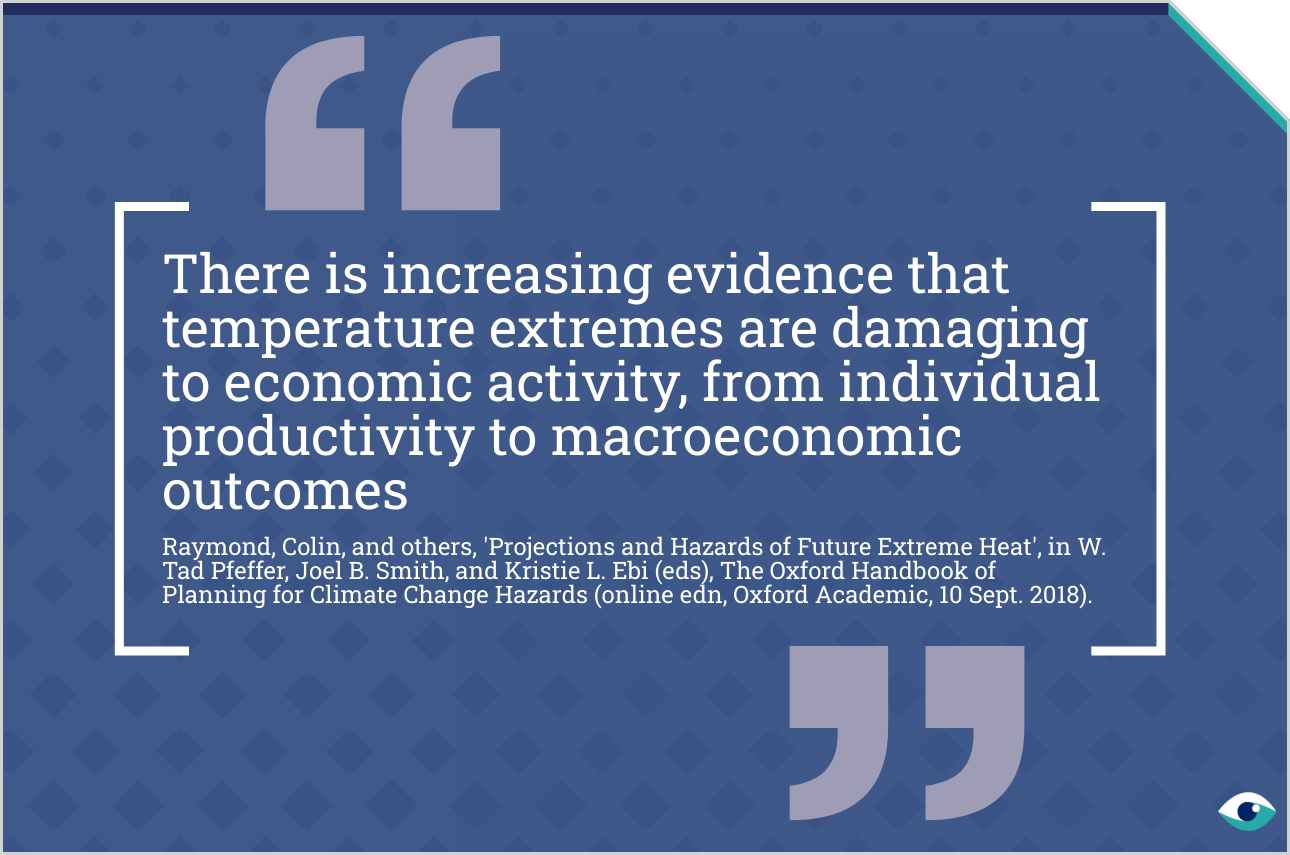Climate change and the urban heat island (UHI) effect are causing a rise in the number of dangerously hot days in cities globally. These extreme heat events not only threaten public health but also pose significant risks to various sectors, particularly manufacturing. However, while data on flooding is readily available, information on extreme heat events is less accessible. Extreme heat poses significant threats to operations, assets and workers in the manufacturing sector. To address these challenges, firms must recognise, assess and implement measures to mitigate the impact of extreme heat, ensuring the resilience and sustainability of their operations.

Manufacturing heat: to be forewarned is to be forearmed
Manufacturers must assess and mitigate extreme heat risks to protect assets and workers
Nature & climate risks
Manufacturing (all industries)
Publication date: 07 Jul 2024
By Craig Otter
AT A GLANCE
Extreme heat poses significant risks to the manufacturing sector, impacting operations, assets and the workforce.
Corporate planning for extreme heat is relatively less advanced, but crucial as it affects productivity and the health of workers.
In the future, addressing extreme heat will be essential for ensuring the resilience and sustainability of manufacturing operations.
A deadly threat
Extreme heat is the most lethal of all weather-related disasters. As an illustrative example, it caused 70,000 deaths in Europe during the 2003 heatwave and almost 56,000 deaths during the 2010 Russian heatwave. Although recognised in climate disclosure responses by leading manufacturers, planning and scenario development for heat risks are often less detailed compared to flood risks, affecting operations, assets and personnel. Key areas of focus include improving understanding of UHI modelling and mapping, using future climate scenarios, assessing heat-health risks, and quantifying costs and benefits.
Unique nature of extreme heat
Extreme heat differs from other climate risks due to its historical lack of governance and regulatory frameworks, its spatial and temporal complexity, its ability to compound other risks and impacts and its often invisible nature. In contrast, flood risks have well-established governance structures, mapped risks, directly measurable impacts, and high visibility through media coverage.

Health impacts
Extreme weather events disproportionately impact residents of low-income urban areas in the global South, leading to reduced water supply capacity and electricity generation. Globally, excessive heat at work presents significant occupational health risks, limiting workers' physical functions, work capacity and productivity. Temperatures above 24–26°C are linked to decreased labour productivity. Meanwhile, exposure to air temperatures above 37°C can cause body heat accumulation, leading to hyperthermia. Manufacturing workers in non-air-conditioned environments are particularly at risk, especially in settings with hot machinery, furnaces and ovens.

Strategies for heat planning
For optimal effectiveness, extreme heat planning should integrate both risk management and design-based responses. Risk management strategies commonly include warning systems for extreme heat events. Popular design-based heat reduction strategies involve adding vegetation and increasing the reflectivity of roofs, roads and other surfaces.
